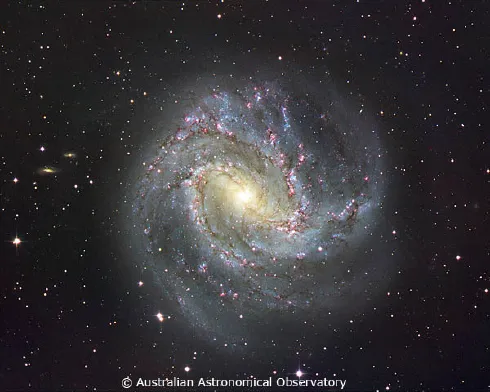Renowned astrophotographer David Malin will be visiting the UK this month, as an exhibition of his pioneering space photography opens in Bristol.
The exhibition is part of Heavenly Discourses, an international conference at the University of Bristol investigating the changing relationship between the night sky and culture through the arts, literature, religion and philosophy.
David Malin’s pioneering deep-sky images of galaxies, nebulae and clusters – taken at the Anglo-Australian Observatory in New South Wales – transformed the way that the wonders of the night sky could be portrayed.

His three-colour astronomical photographs were among the first to display the remarkable colours of deep-sky objects, especially interstellar gas clouds and planetary nebulae.
Many of his iconic images, including the image of spiral galaxy M83, above, will be on display at the exhibition in The Bristol Gallery, which runs from 15 to 23 October.
There is also the chance to buy a signed David Malin astro image, professionally printed and framed, either at the exhibition or by visiting the online gallery.

David Malin will be giving a free talk, 'Photography and the Discovery of the Universe', at The Bristol Gallery on Monday 17 October at 6pm.
And there will be another free talk at the gallery about 'The Changing Face of the Heavens', by art historian Darrelyn Gunzberg on Friday 21 October at 6pm.
David Malin will also be speaking at the Heavenly Discourses conference, which runs from Friday 14 to Sunday 16 October at the University of Bristol’s Wills Memorial Building, Queens Road.
His talk, 'A Universe of Colour', charts the rise of photography and the increasing resolution with which we can view the stars.
Other speakers at the three-day conference include Prof Gerry Glimore of the Institute of Astronomy, who will be discussing ‘Artistic Representations of Astronomical Time’.
Prof Michael Rowan Robinson of Imperial College will be giving a talk entitled ‘From Sputnik to Herschel and Planck’.
And Dr Ed Krupp, director of the Griffith Observatory, Los Angeles, will be looking at human exploration of space as the temples or pyramids of today, reflecting the concept of celestial ascent.
